We arrived without a plan, walking from the Göreme panorama and letting the horizon draw us forward until the jagged shapes of rock grew closer, more intricate. The air shifted as we descended, carrying with it the scent of dry earth and grass. The path meandered past patches of wildflowers, their stems bending in the breeze, and lone trees that cast small pools of shade.
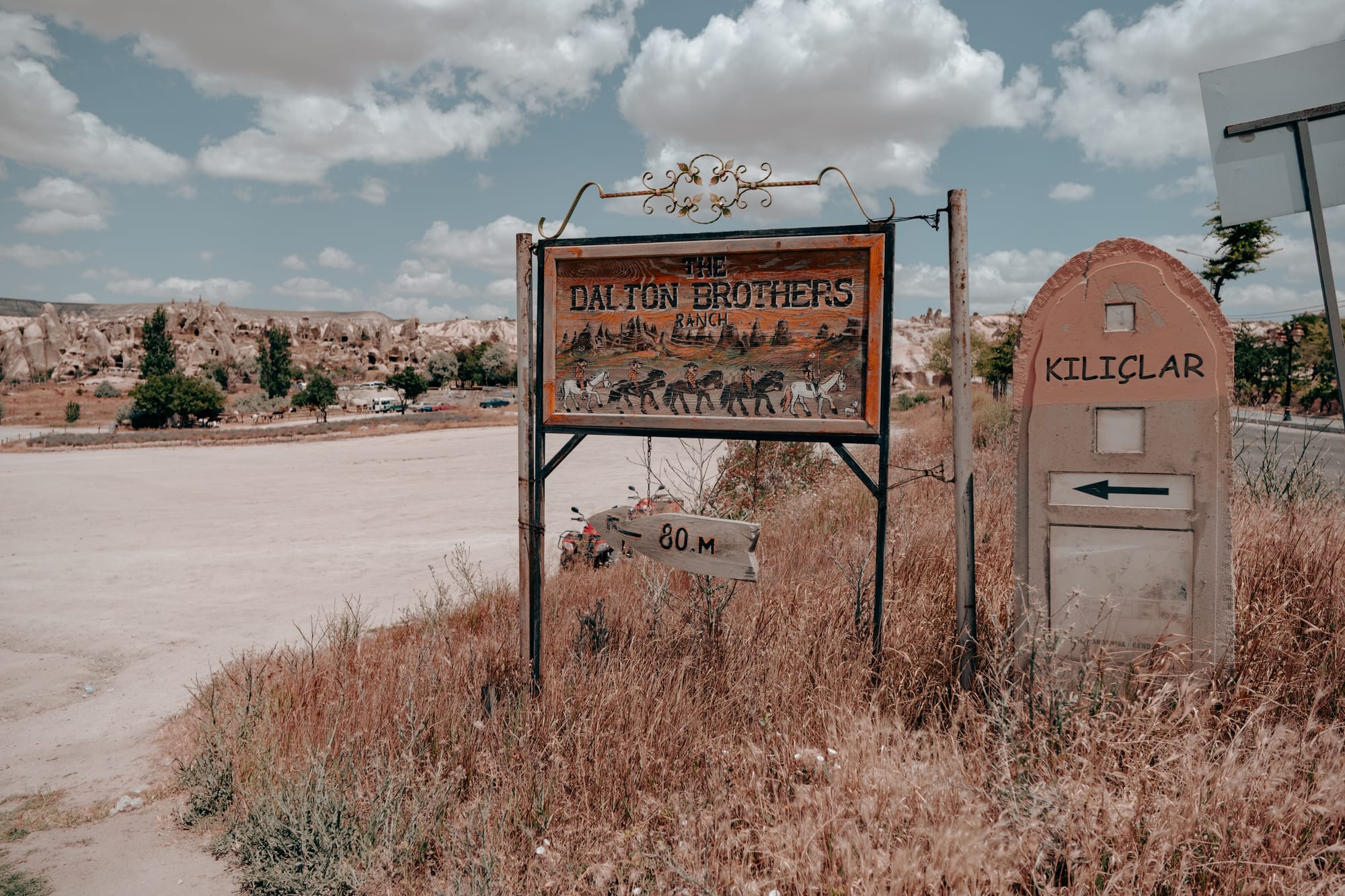
At the entryway, a hand-painted wooden sign sways gently. Its lettering, worn by sun and rain, still carries its welcome clearly. Nearby, a painted trailer rests like a mural on wheels, scenes of galloping horses and pastoral hills rendered in soft greens, dusty blues, and warm browns. Its colors mirror the tones of the valley around it. Beside it, a weathered post carves with rope-like patterns the boundary between road and ranch. The ground beneath shifts from firm dust to a more forgiving surface, worn smooth by years of hooves and footsteps.
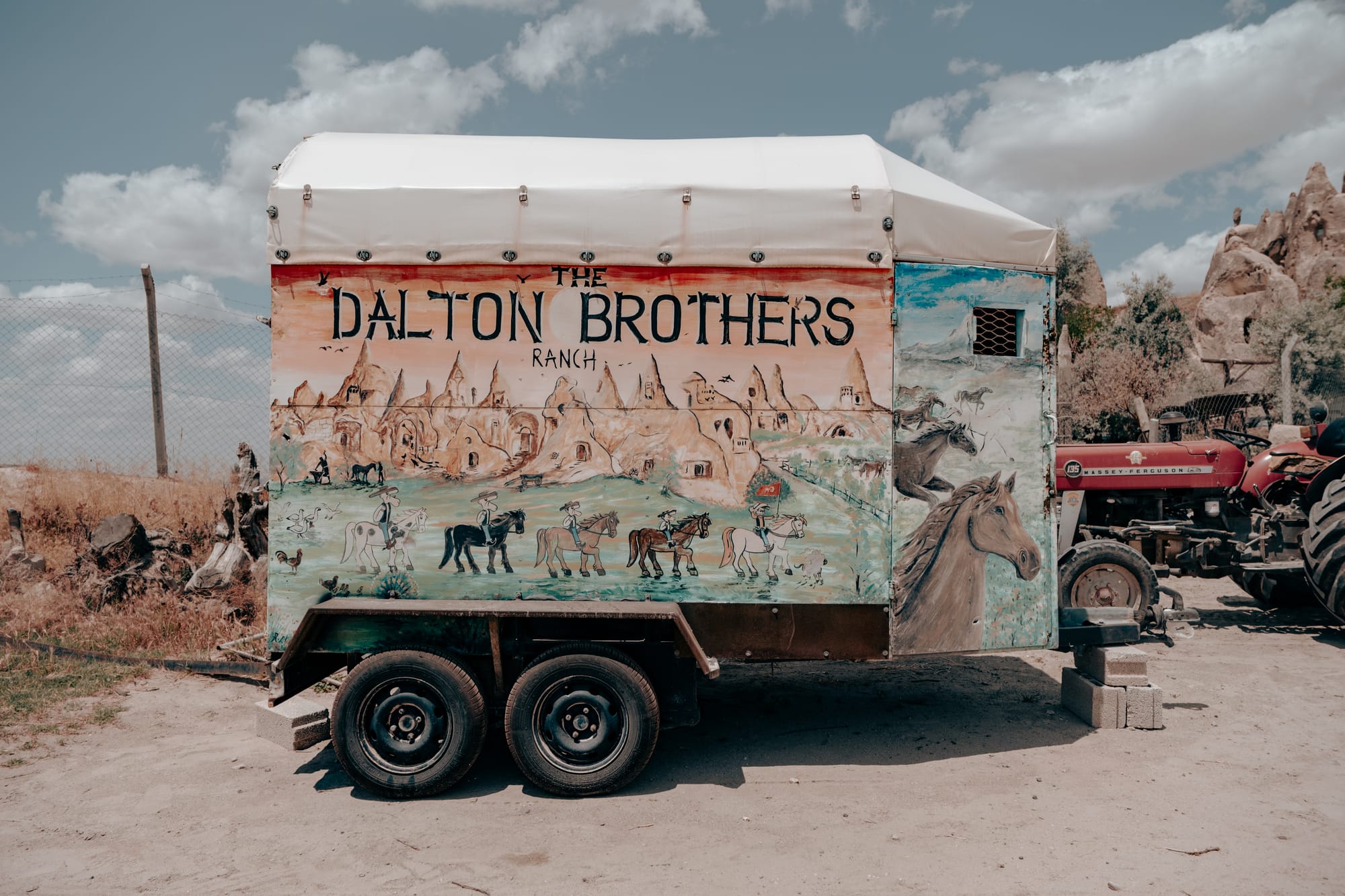
A few paces further, a collection of barrels and stacked crates hints at the working life of the ranch. Tools lean casually against a wall, their wooden handles polished by use. The sun catches on the curved rims of old metal pails, each one dented and marked by years of service.
A valley held in stone and light
Dalton Brothers Ranch is cradled between towering formations and the open expanse of sky. To one side, an old orange truck with peeling paint stands beside a motorbike, their placement casual yet deliberate, as if they belong exactly where they are. Beyond them, the valley stretches wide, its floor a pale canvas flecked with footprints and hoof marks.
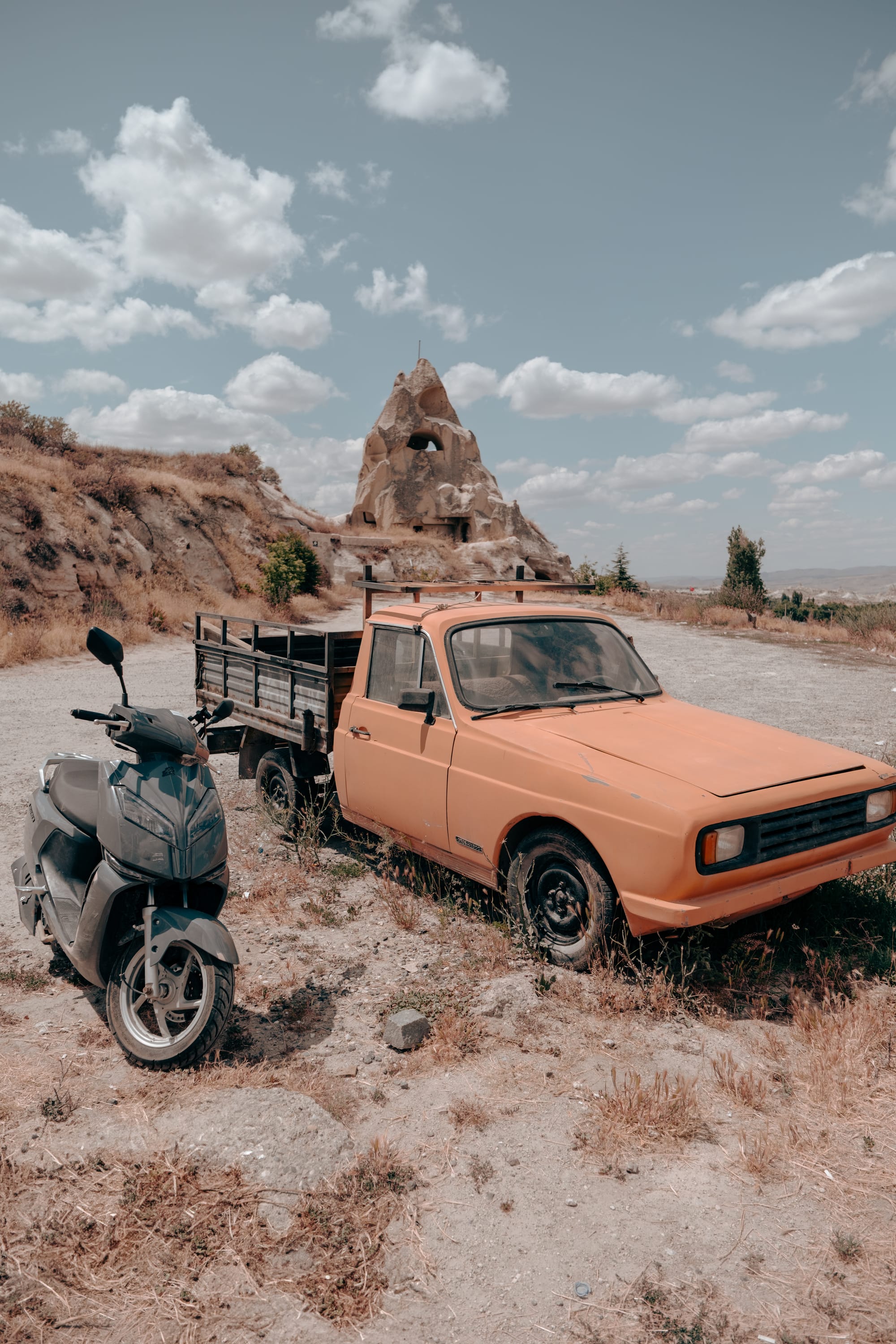
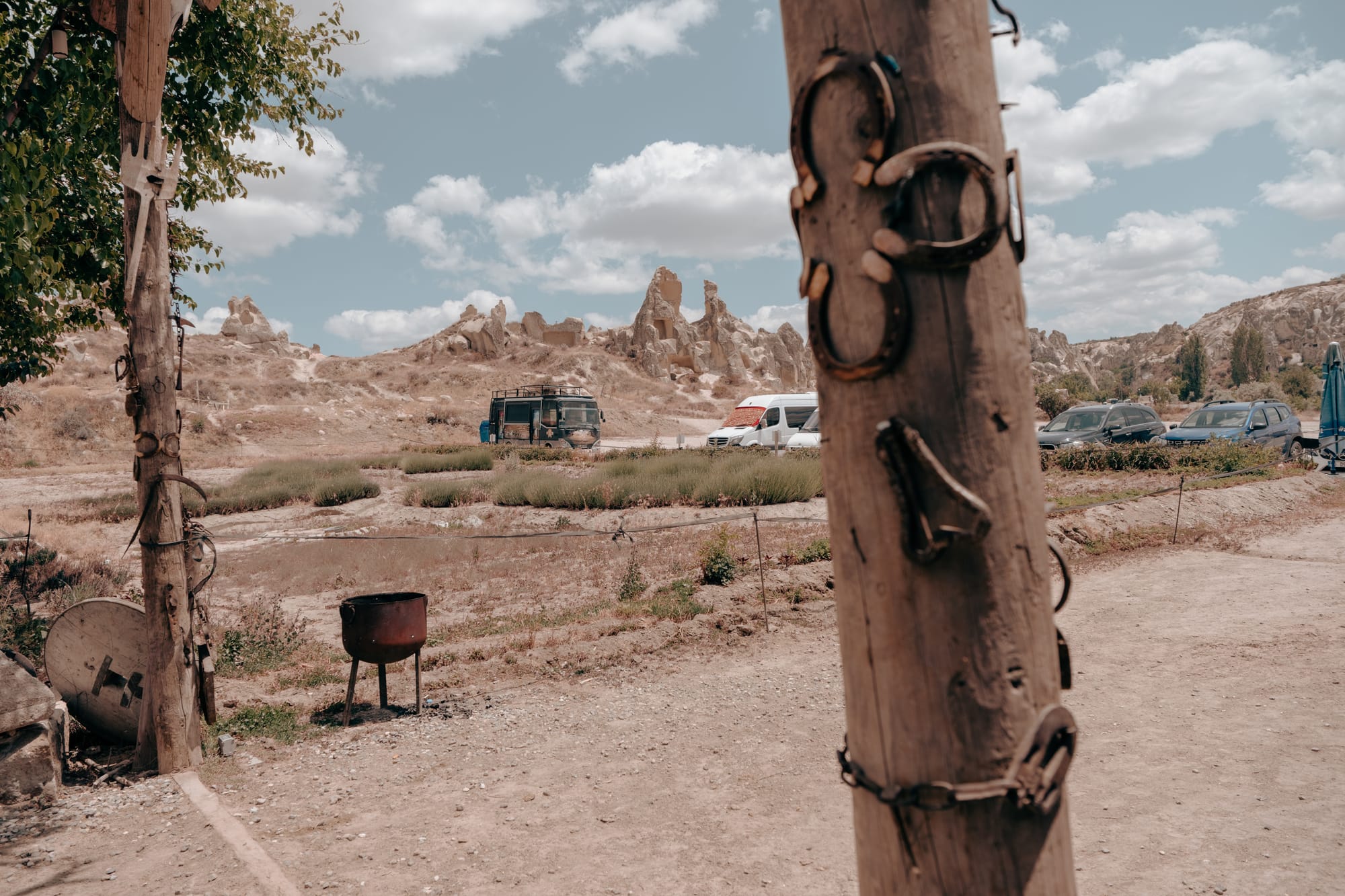
A sun-faded orange truck and scattered rustic details set against surreal rock formations
The rock towers that frame the space are pocked with openings, remnants of ancient habitation. The wind sighs through them, creating low, breathy notes. Rough wooden fences trace the lay of the land, leaning slightly in places but sturdy. Nearby, hay bales form neat golden stacks, their edges glowing in the sun. The smell of dried grass mingles with the fainter aroma of leather from the tack stored in shaded areas.
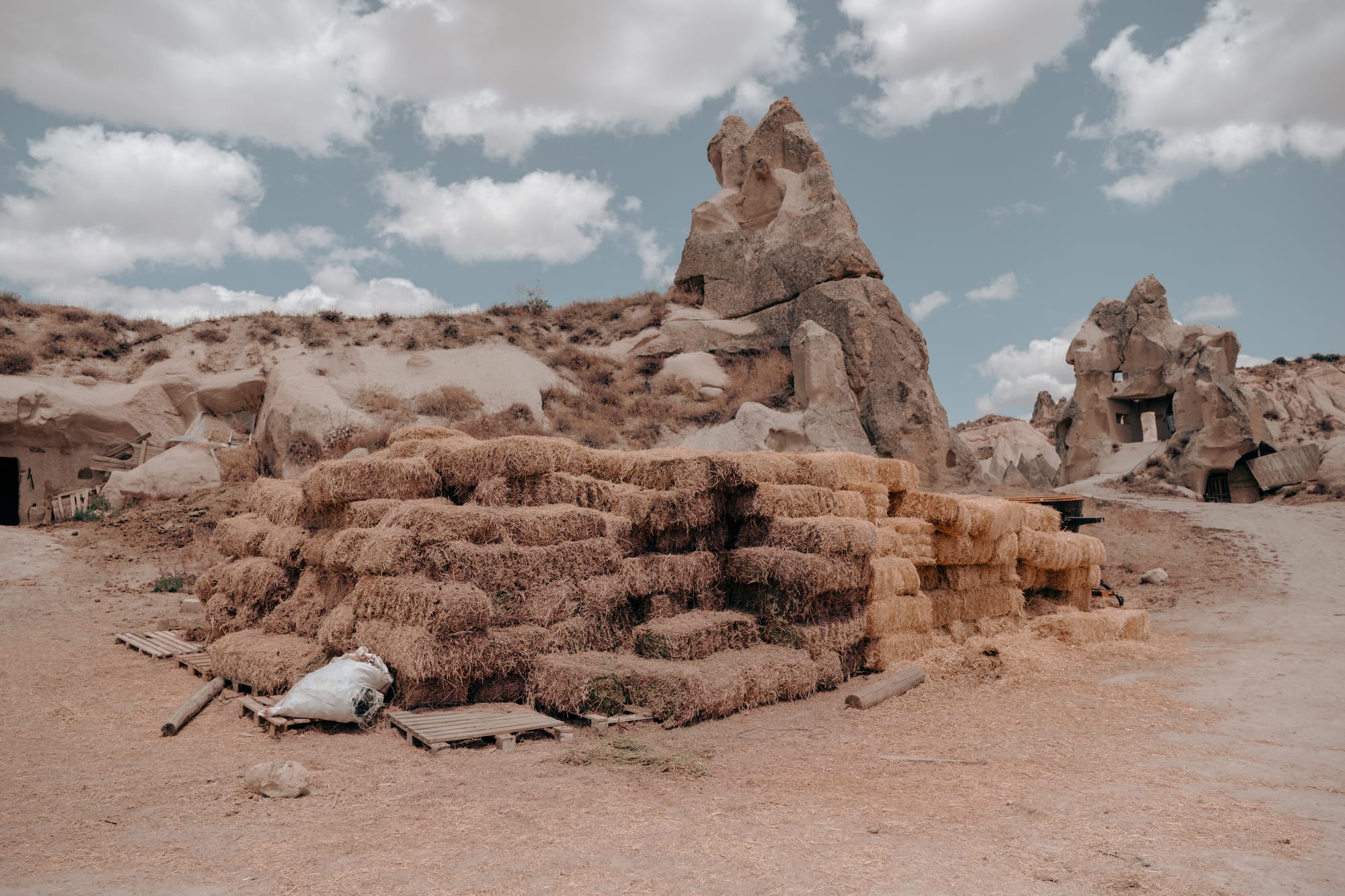
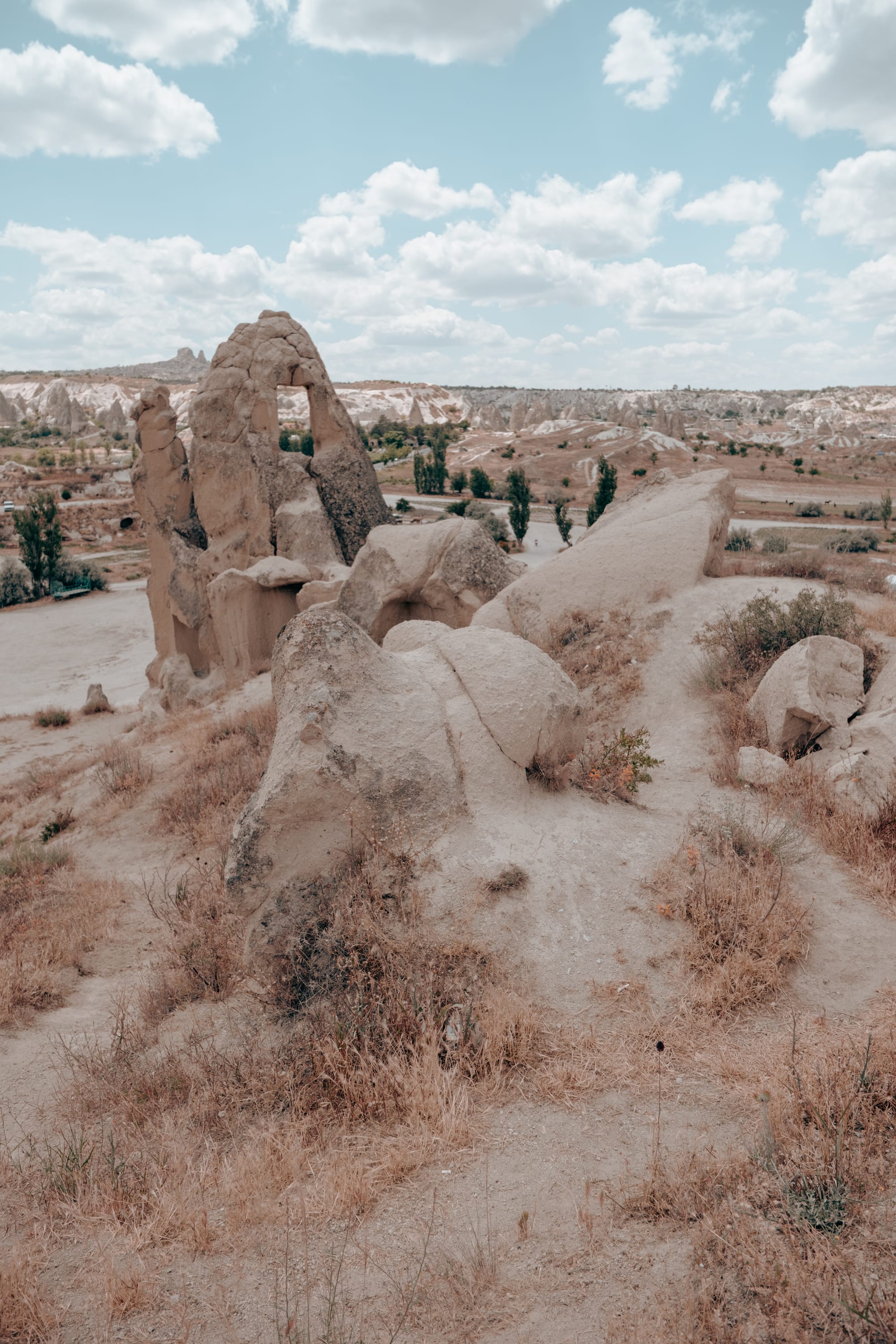
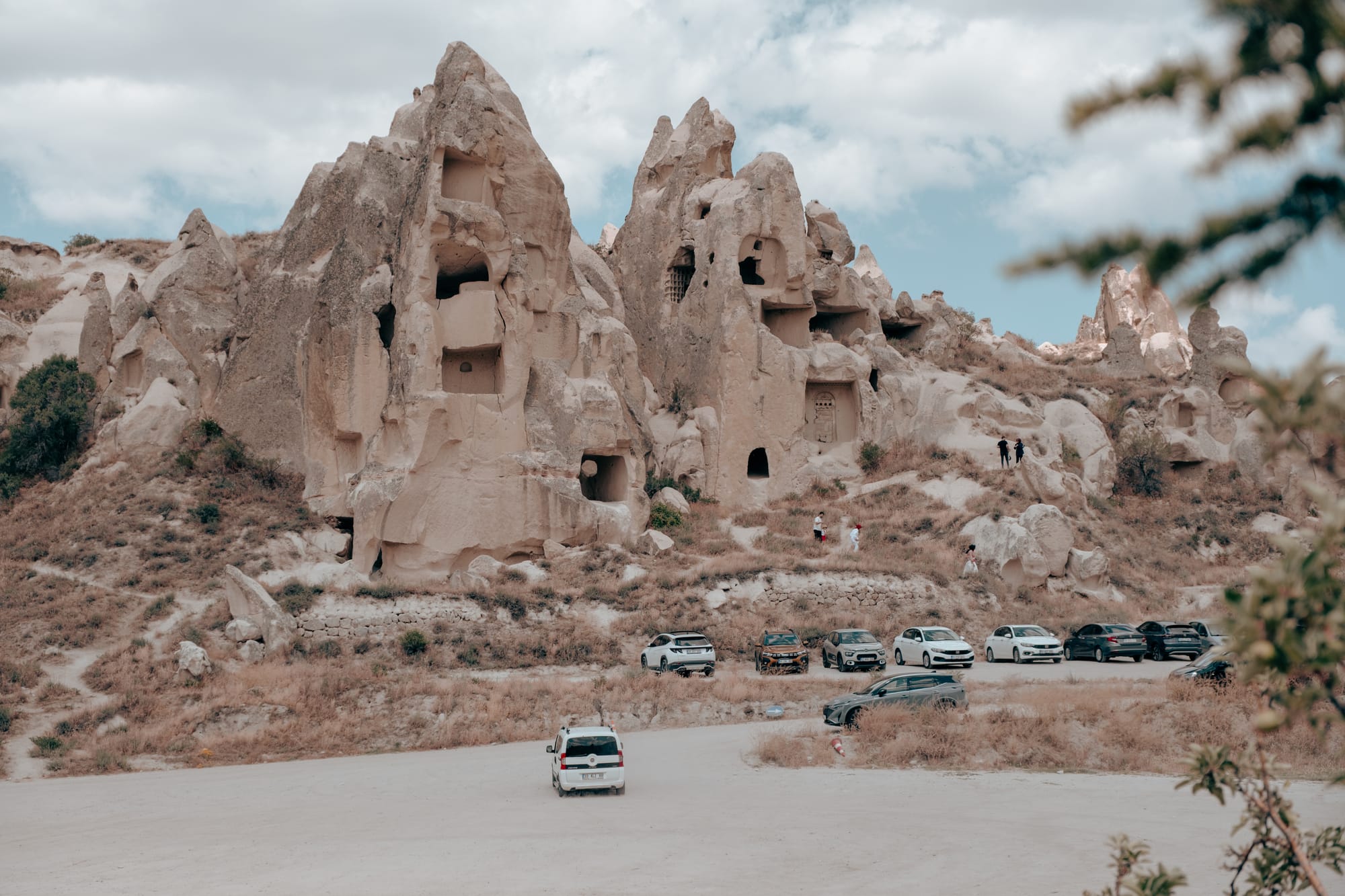
Weathered rock spires and carved dwellings rise dramatically against Cappadocia’s open sky
Further in, a rusted wheelbarrow leans against a stone wall, its bed filled with fresh hay. Chickens scratch at the ground nearby, their soft clucks blending with the distant snort of a horse.
Land of beautiful horses
The name Cappadocia, often said to mean “land of beautiful horses,” feels tangible here. White coats gleam like porcelain, chestnut coats like polished mahogany. They graze with a kind of unhurried grace, tails swishing idly. Two white horses stand together in companionable silence, their heads inclined toward one another as if in quiet conversation.
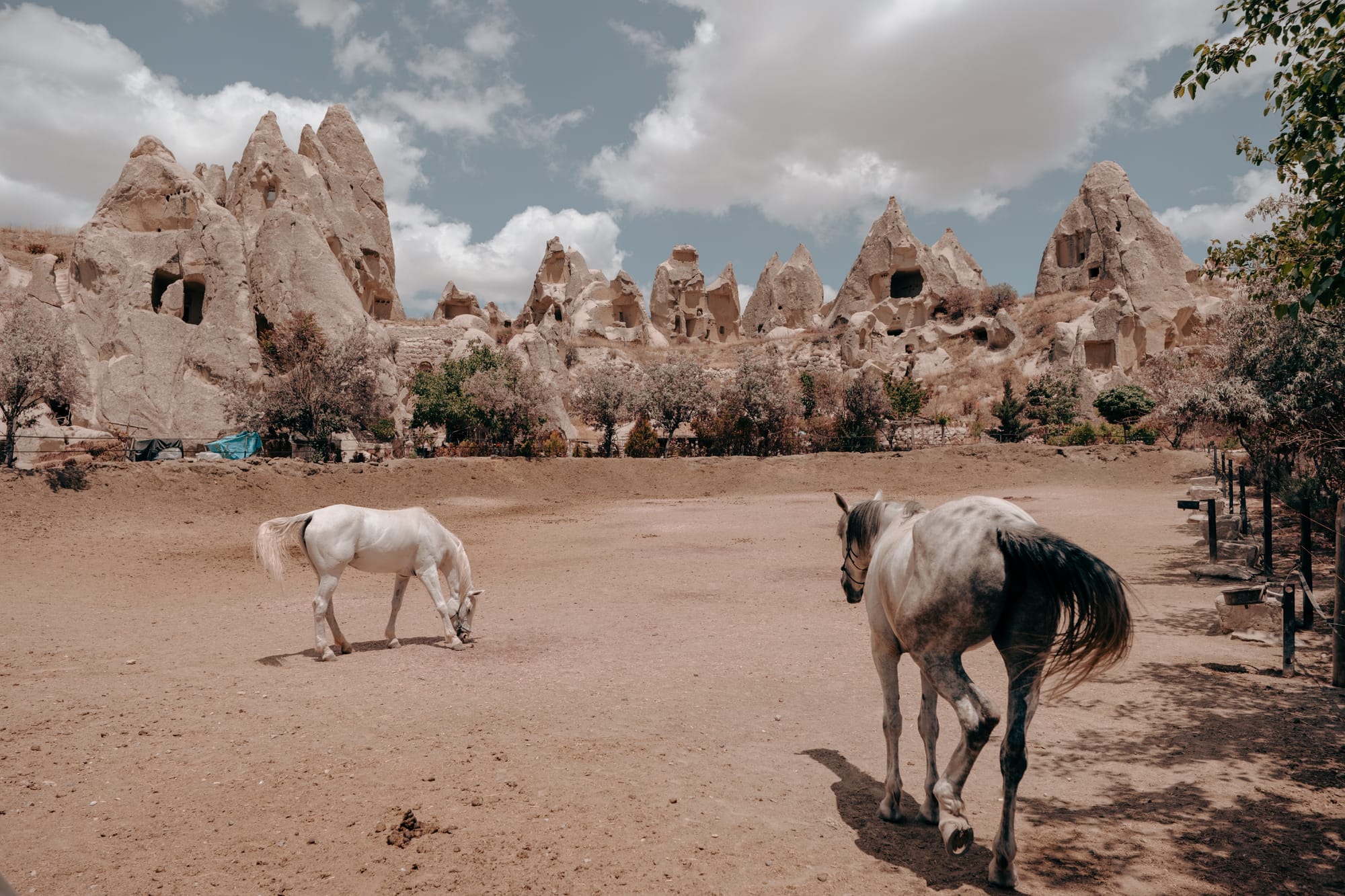
One grazes alone near a curved wall of stone, the arc of its neck catching the light. Dust puffs softly beneath its hooves in the warm air before sinking back into the earth. The quiet is broken only by the rhythmic tearing of grass and the occasional flutter of wings as birds moved between perches.
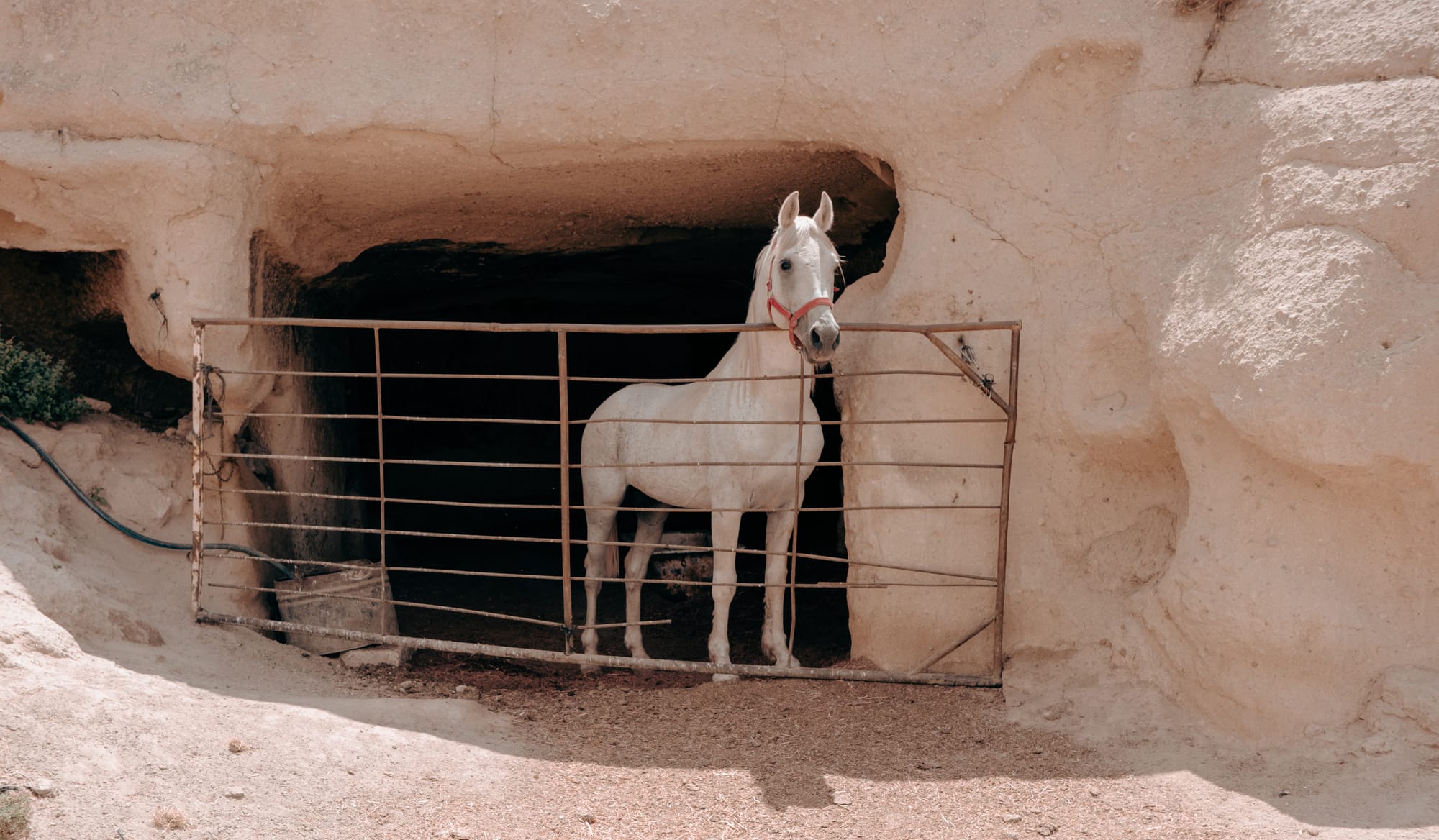
Closer to the edge of the valley, a foal rests in the shade of a rock outcrop, its ears flicking at flies. Now and then it lifts its head to watch the others, its gaze calm and steady. The herd moves as a loose constellation, each horse following its own course but bound by an invisible thread.
A sculptural garden carved by time
The rock formations shift their character with every change in light. In the morning, their faces glow with pale pinks and creams. By afternoon, they darken to deep gold and rust. Worn stone steps wind upward to doorways carved centuries ago. Inside, the air is cool and carries the faint scent of stone dust.
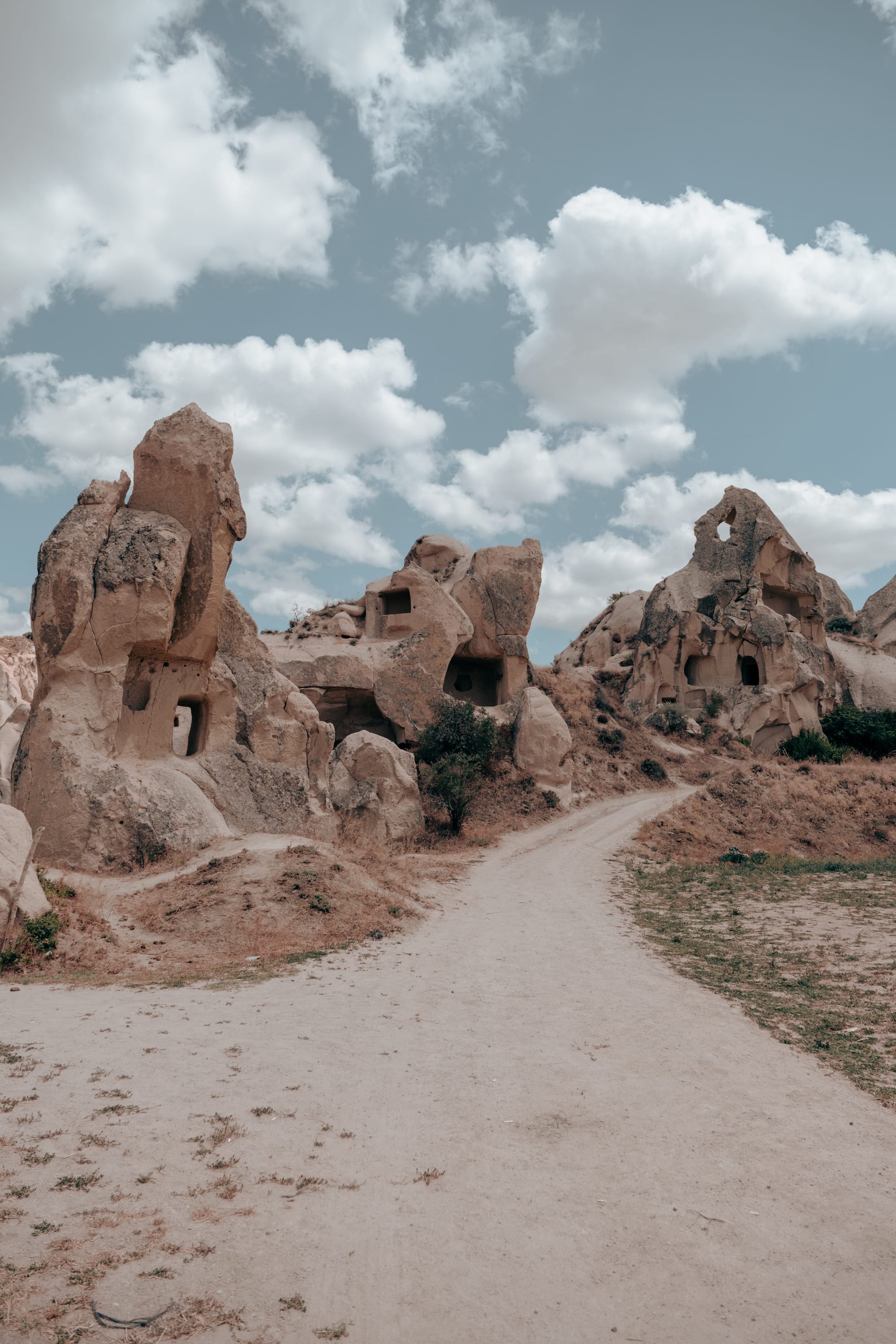
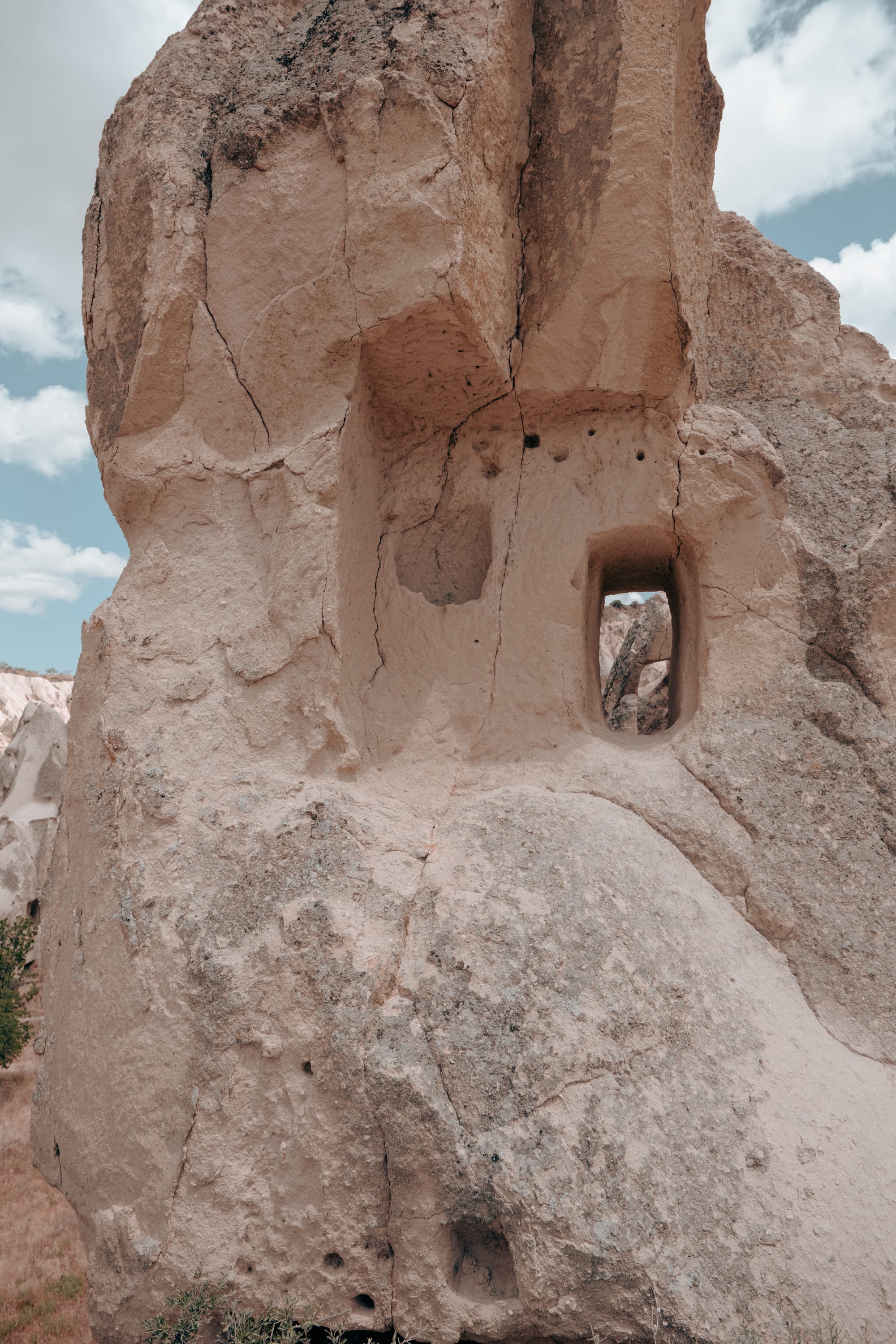
Pathway winds through Cappadocia’s ancient rock-carved dwellings and weathered stone formations
Narrow paths squeeze between tall spires, their bases surrounded by tufts of hardy grass. In the wider clearings, carts and tools sit in quiet readiness. Wooden wheels reveal the traces of countless journeys, their rims lined with rust. The smell of hay and leather hangs heavy, a comforting note against the crisp dryness of the wind.
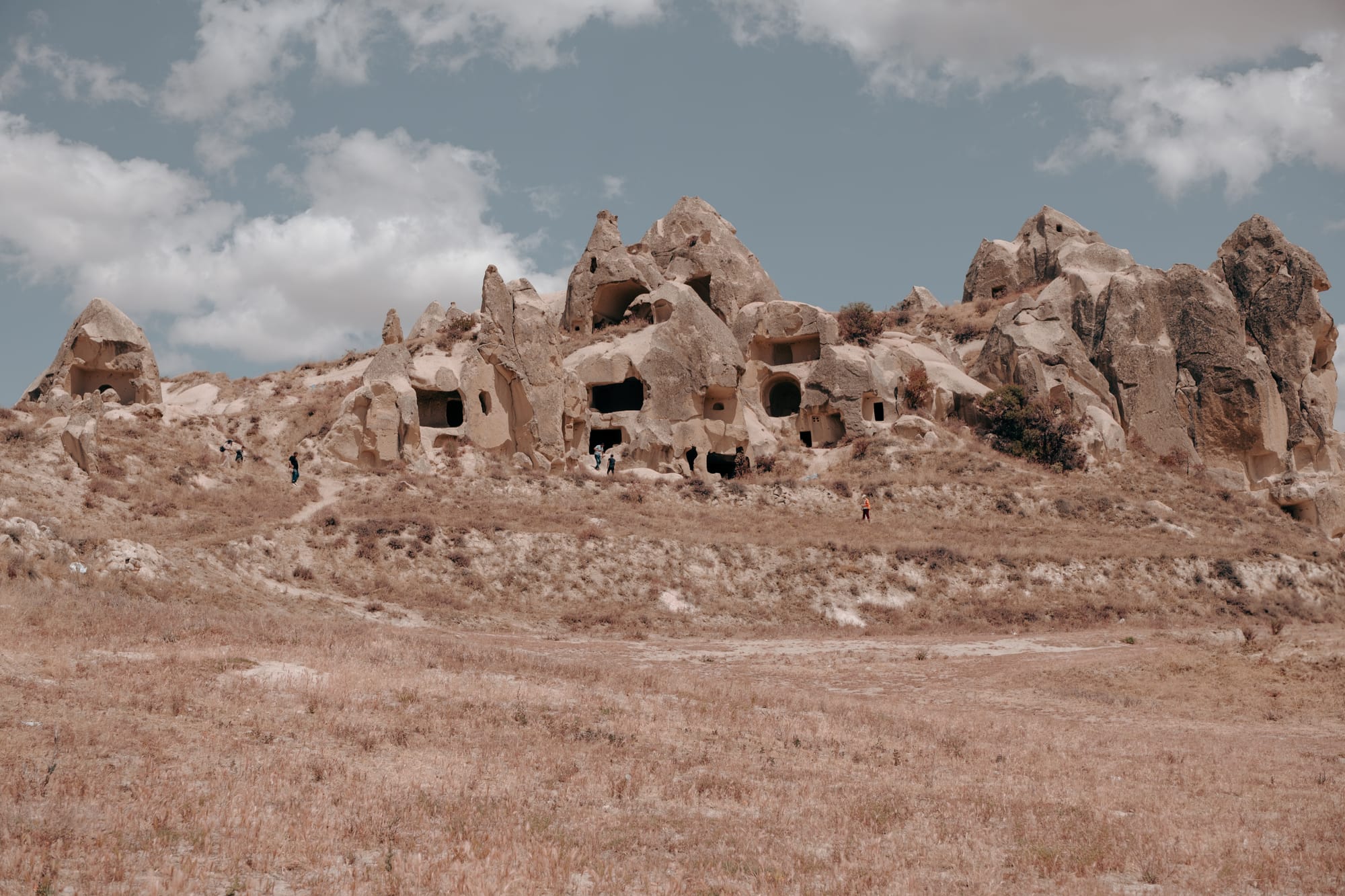
Shadows fall long and sharp across the ground, dividing it into alternating bands of light and dark. In some places, the shadows form intricate lacework as they filter through the gaps in wooden fences or the branches of trees.
A place for wandering
The paths weave through scenes that felt as though they’d been set in place long ago. Haystacks rise beside abandoned wooden carts, their paint peeling in layers of red and blue. Stone troughs stand like sentinels, their shallow pools of water mirroring the sky.
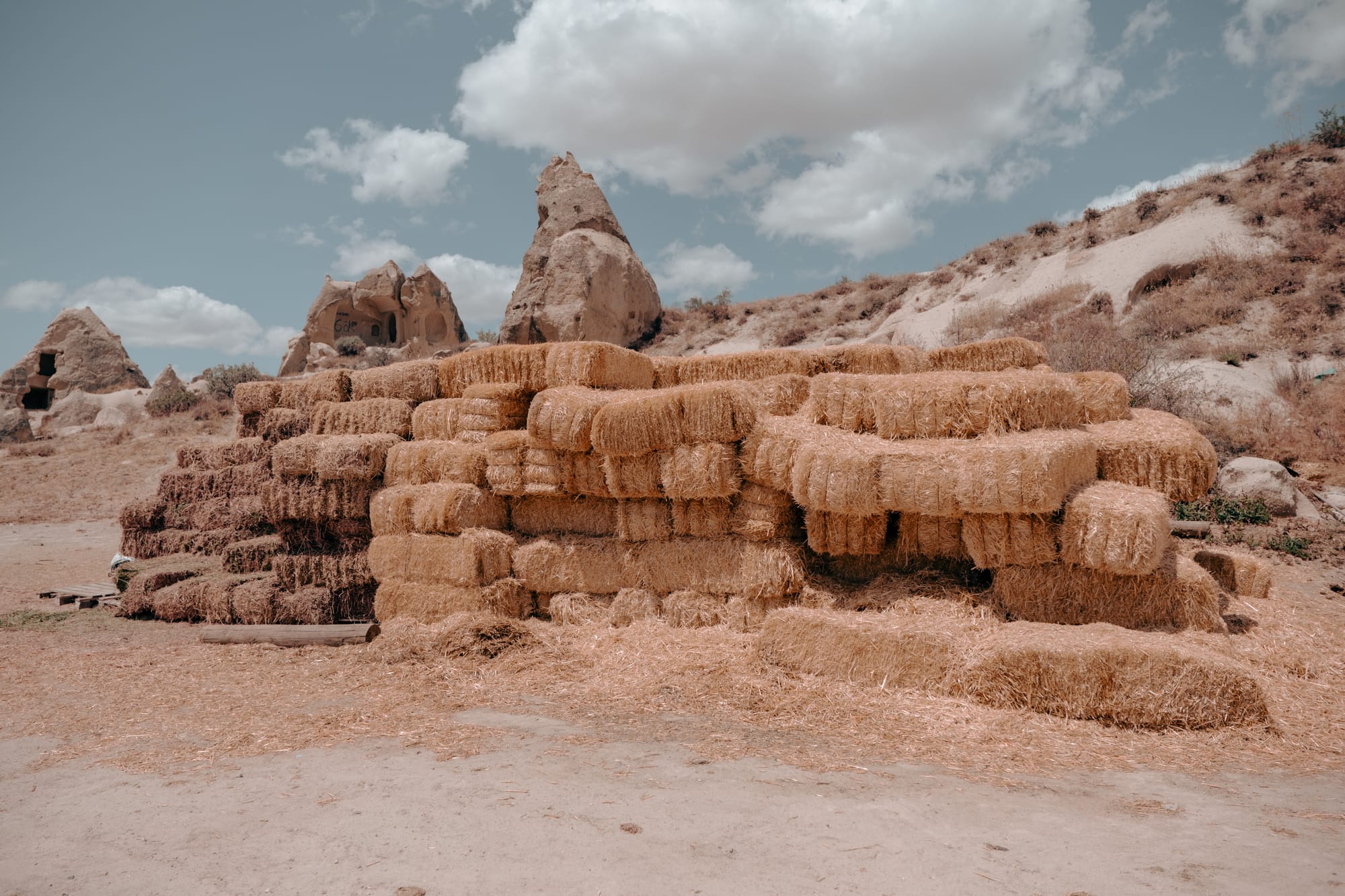
In an open clearing, cliffs form a protective ring.
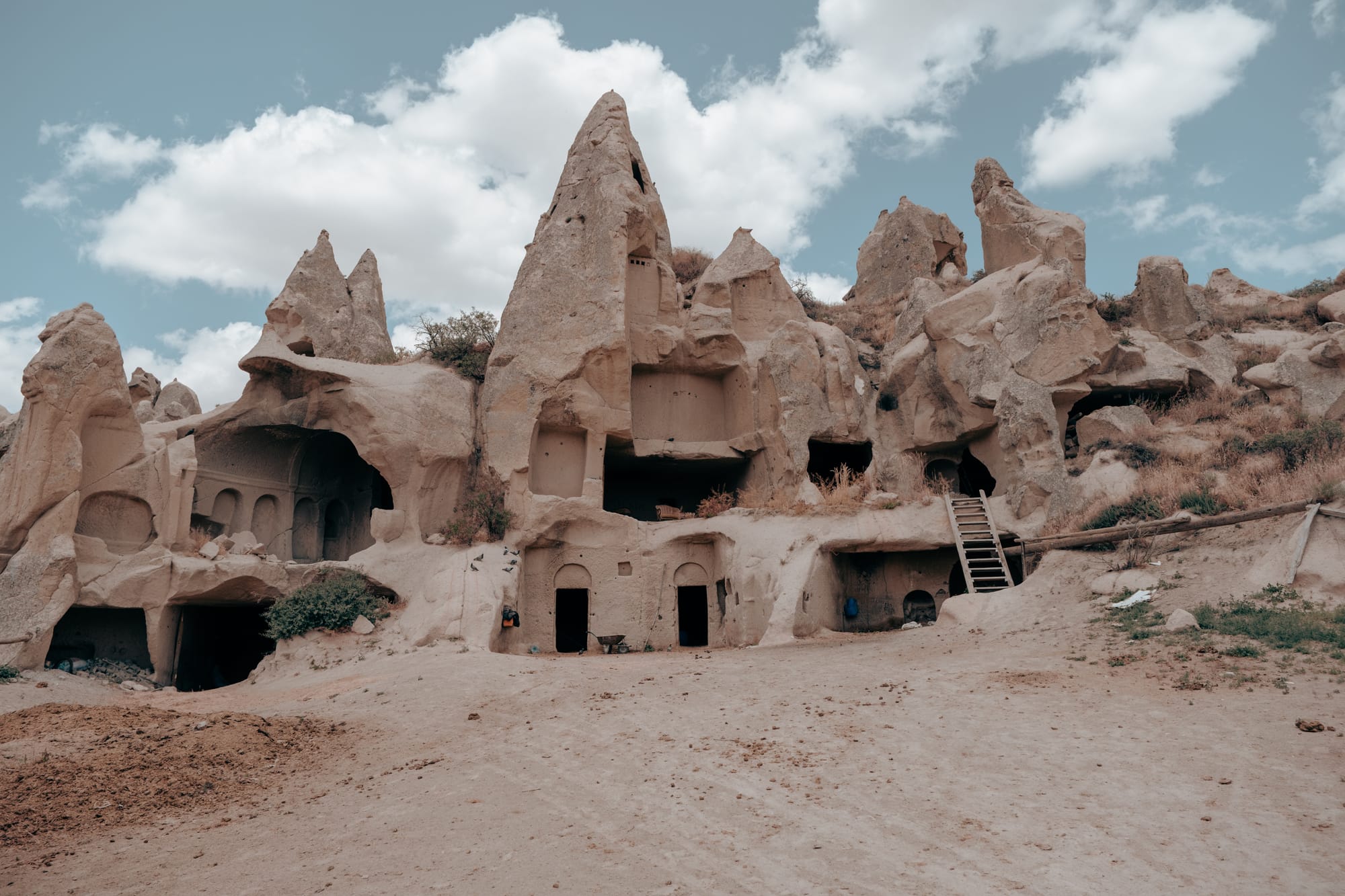
Hardy plants dot the earth, their green muted by the dust that clings to them. From this vantage, the plateau extended into the distance, a sea of stone formations rising and falling like frozen waves.
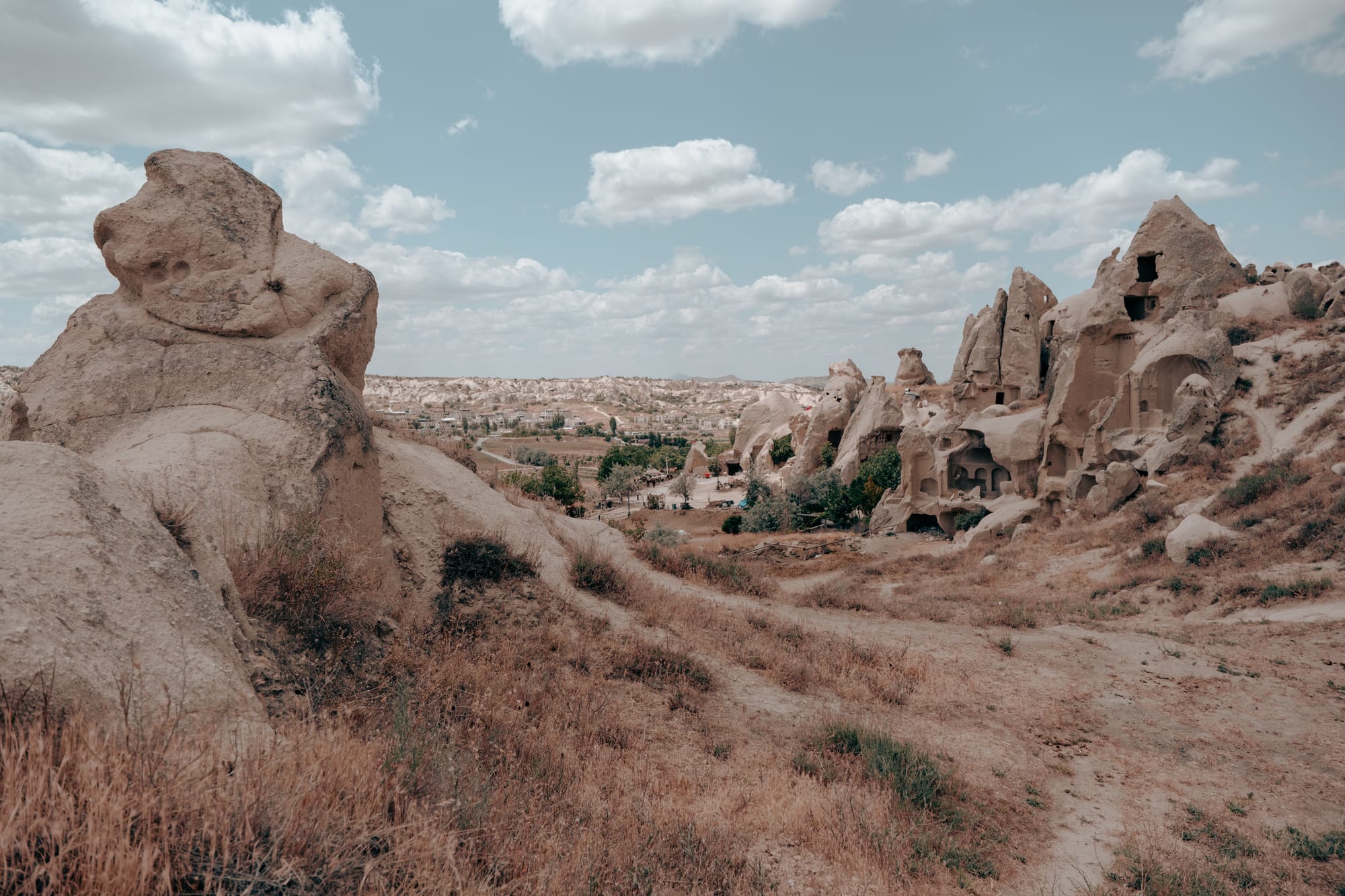
On the ground, small stones are scattered, their surfaces worn smooth. A single horseshoe print, pressed deep into the soil, hints at recent passage. Near the center of the ranch, an old wagon rests in the shade. Its bed is crowded with pots—succulents with fleshy leaves, herbs with delicate blossoms, and flowers that seemed to defy the dry air.
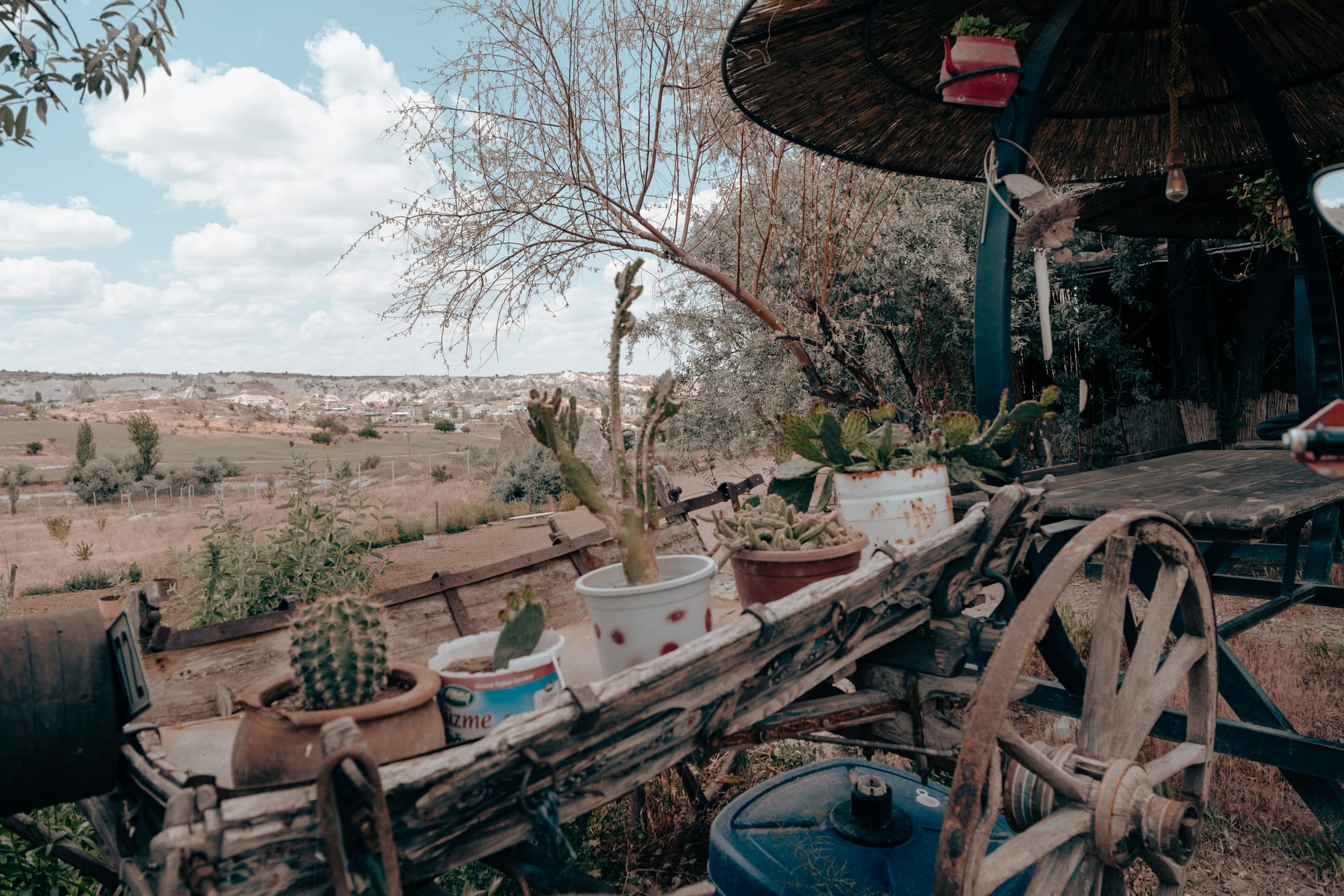
Behind the wagon, shelves support an assortment of cups and tools, each bearing the marks of use. A blue enamel mug with a chipped rim sits beside a coil of rope, its fibers frayed. The scent of mint drifts from one of the potted herbs when brushed by the wind.
In another corner, a painted cart with faded wheels leans against a fence. Its surface is now a resting place for potted plants, the blooms spilling over the edges in quiet abundance. These moments of stillness give the ranch a layered richness, the sense that it is both a place of work and a space for contemplation.
Shifting light
Dalton Brothers Ranch is a meeting point between land, animal, and sculpted stone. Walking its paths invites a pace that matches the valley’s own.
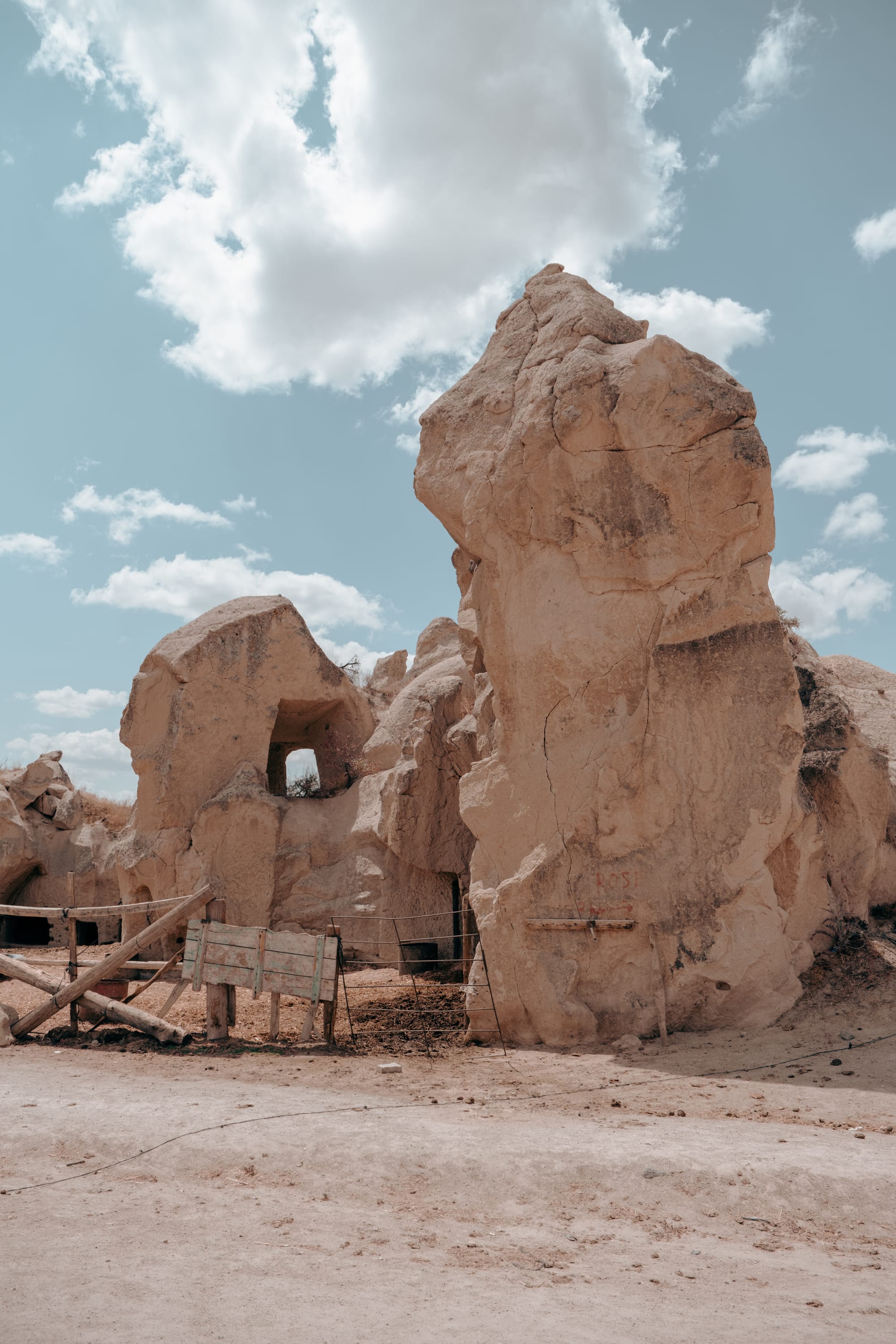
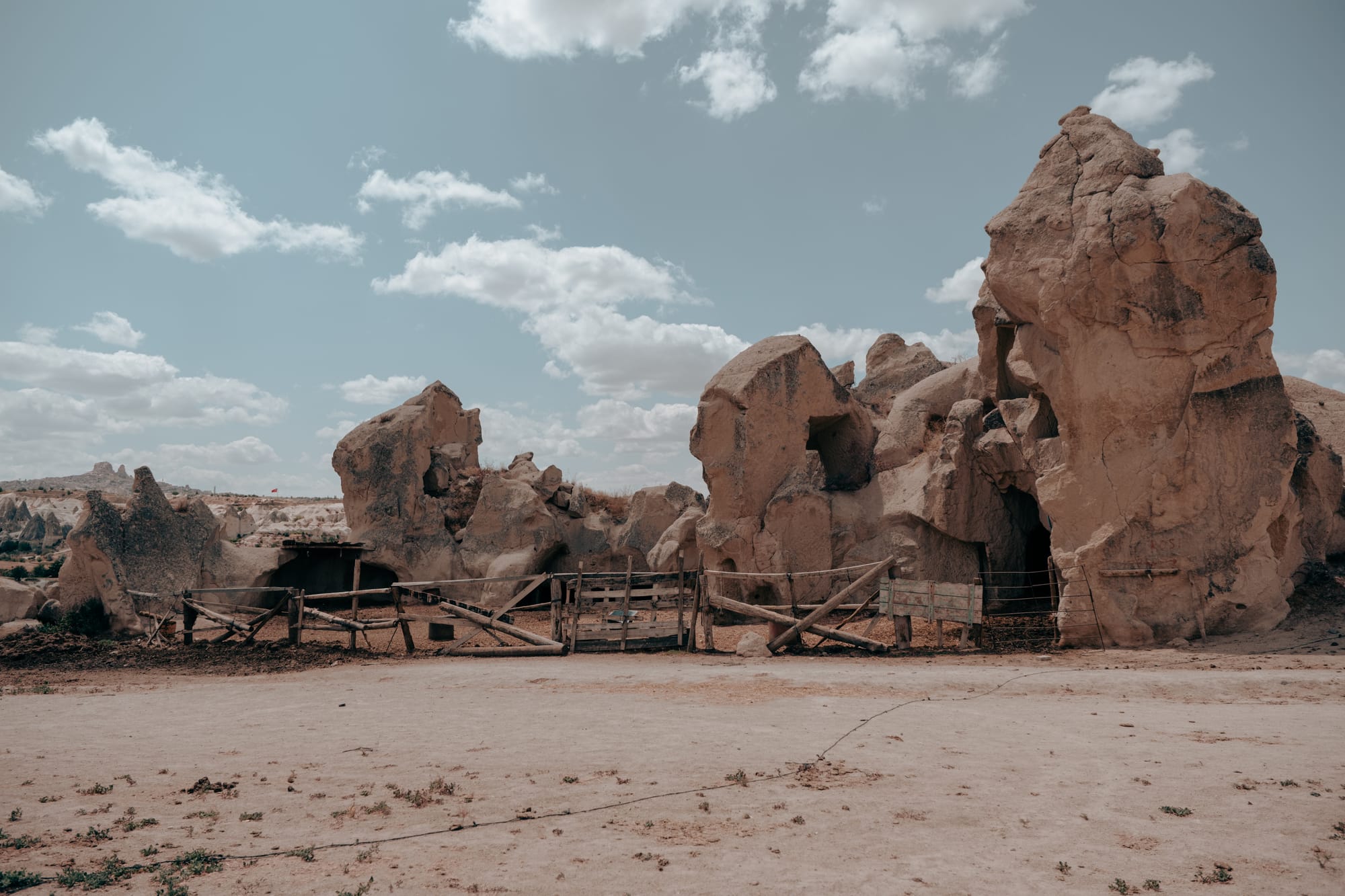
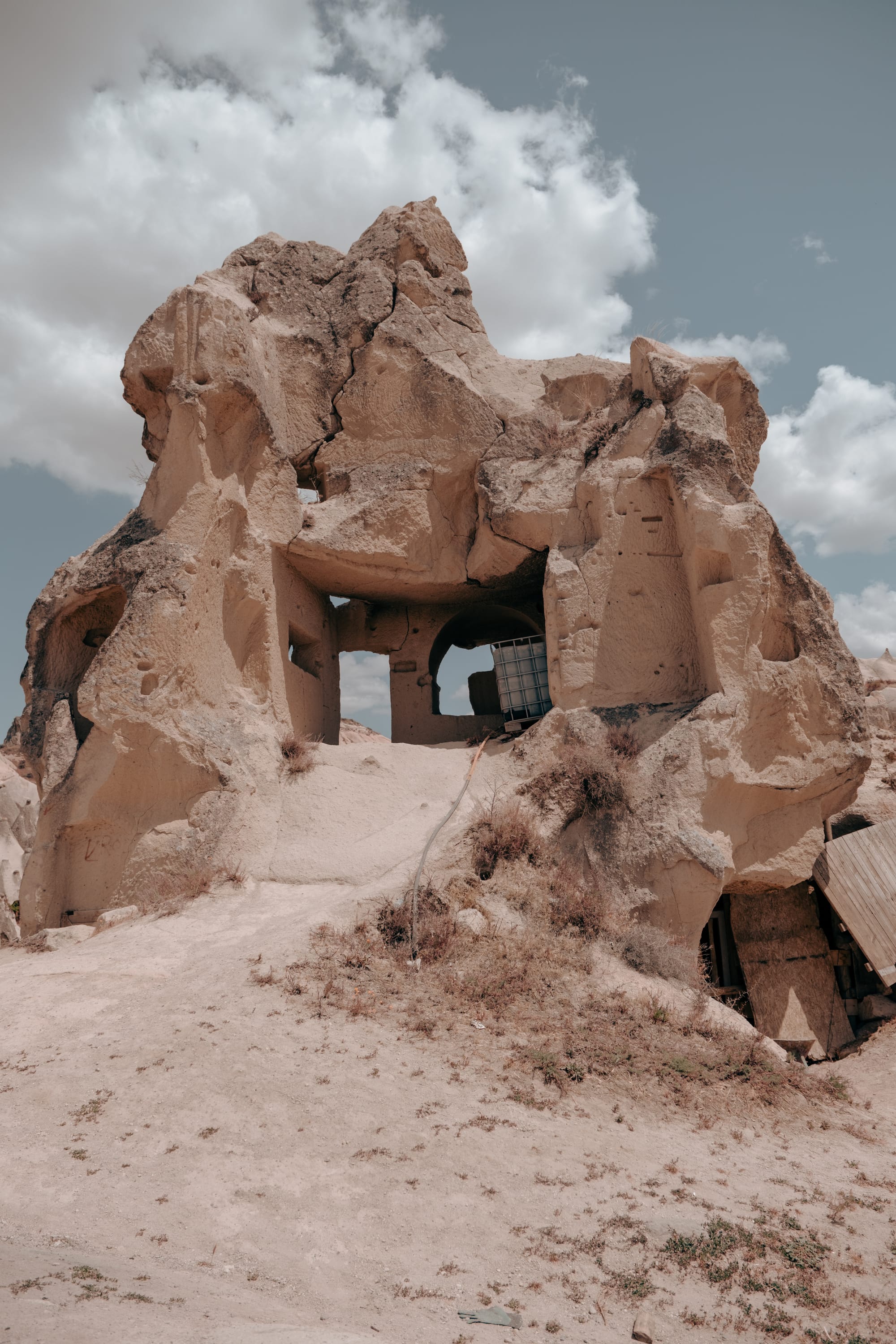
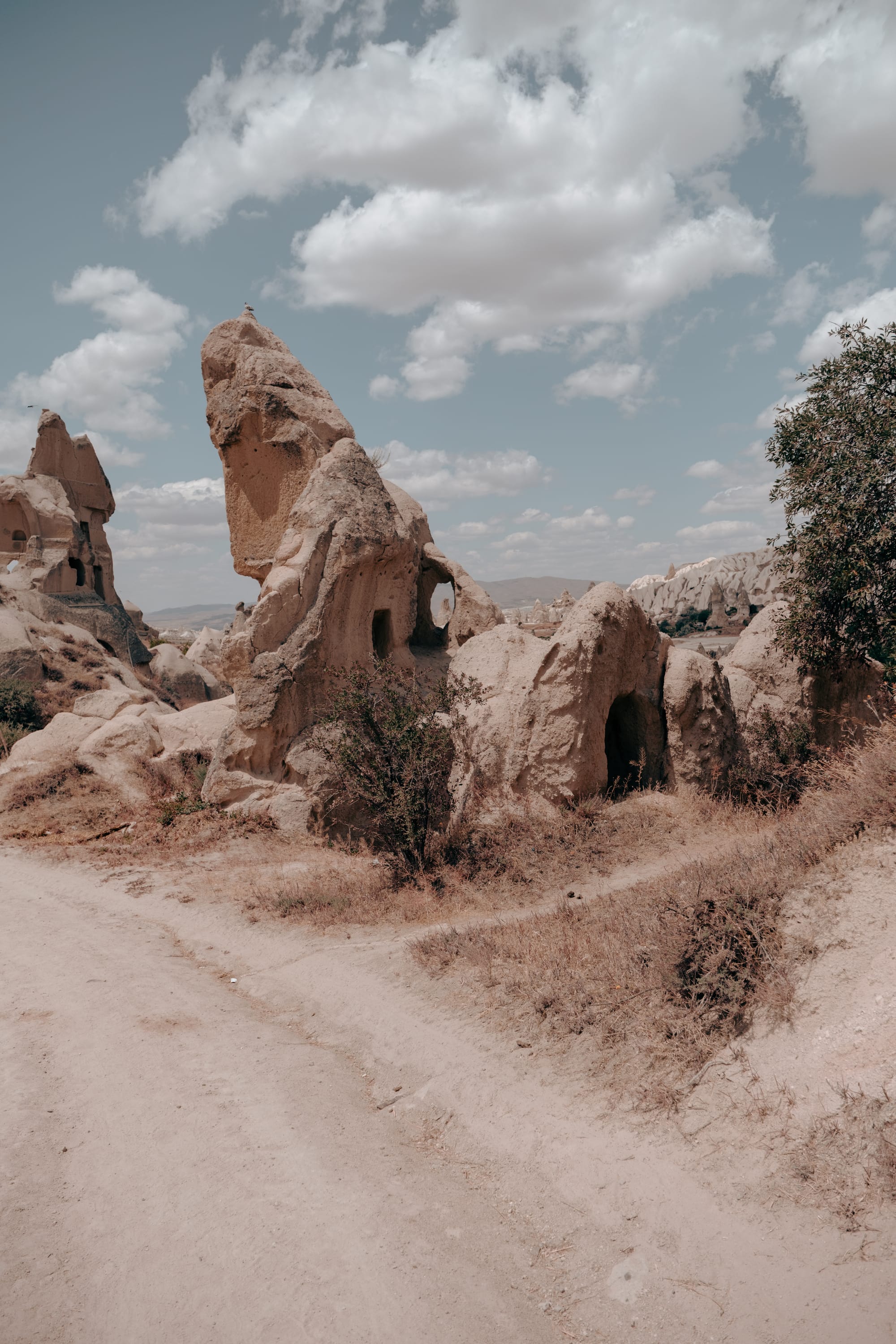
Eroded rock formations with carved openings stand under Cappadocia’s bright summer sky
The horses move in their own rhythm, untroubled by the presence of visitors. The wind lifts dust into brief, swirling patterns, then lets it fall.
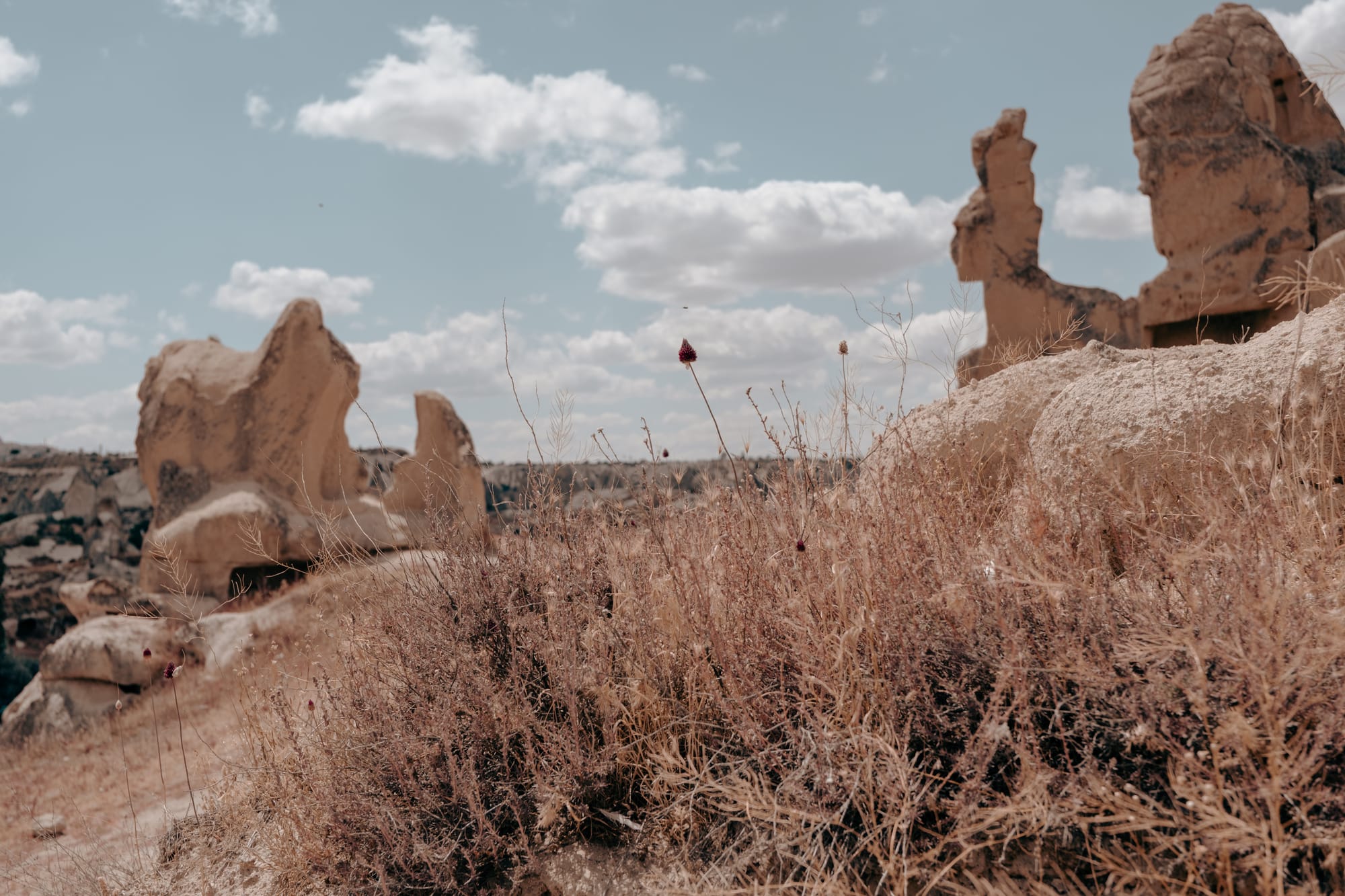
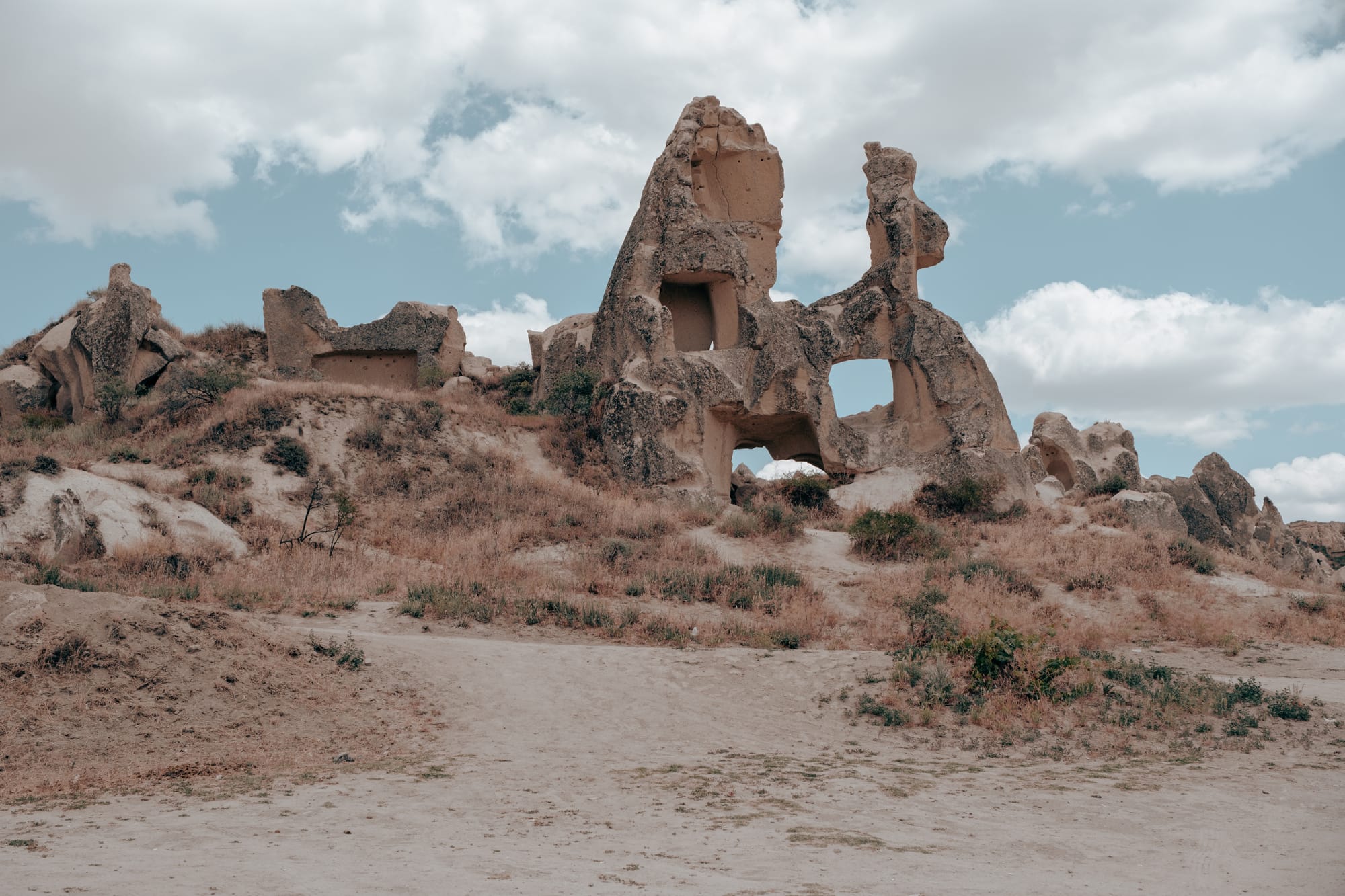
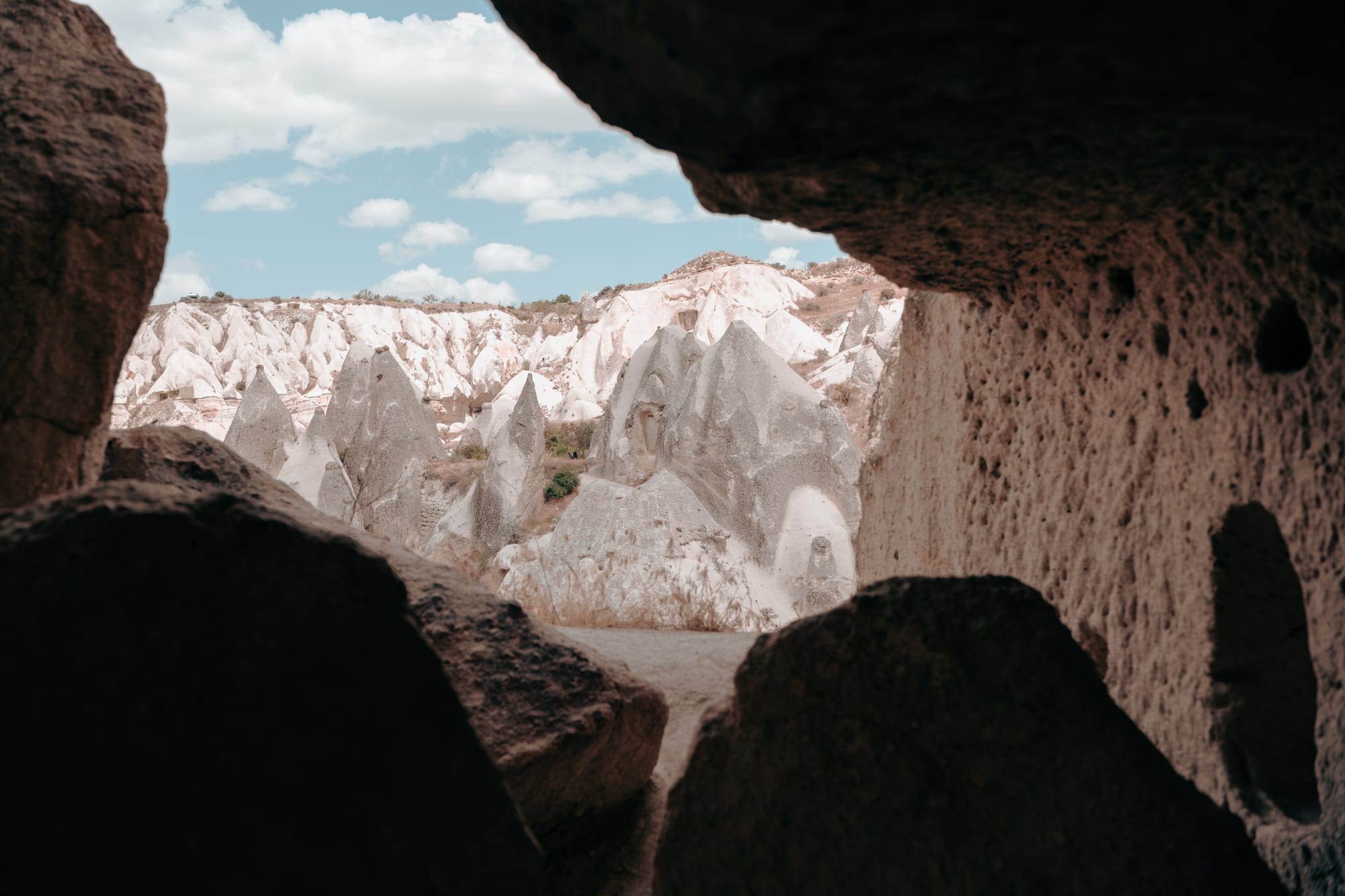
Eroded rock formations and cave openings reveal Cappadocia’s dramatic, otherworldly terrain
As the day wanes, the light shifts again. The entry sign catches the last of the sun, its edges glowing. The mural on the trailer warms to a deeper hue, and the truck and motorbike stand as quiet silhouettes. The air cools and carries the faint scent of hay.
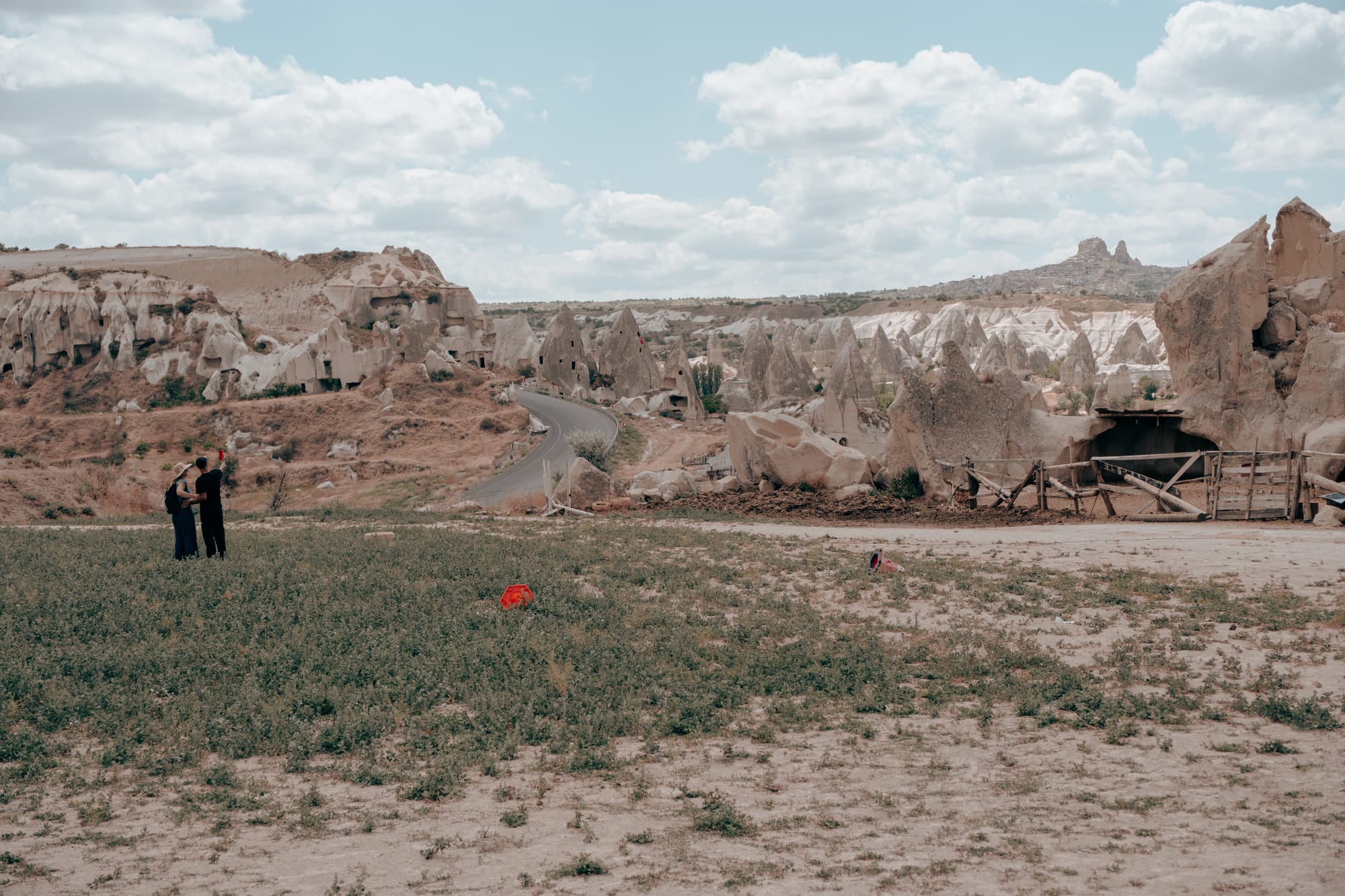
Shadows lengthen until they merge into the contours of the land. The sounds soften to almost nothing—the occasional clink of a chain, the rustle of hay, the soft exhale of a resting horse.
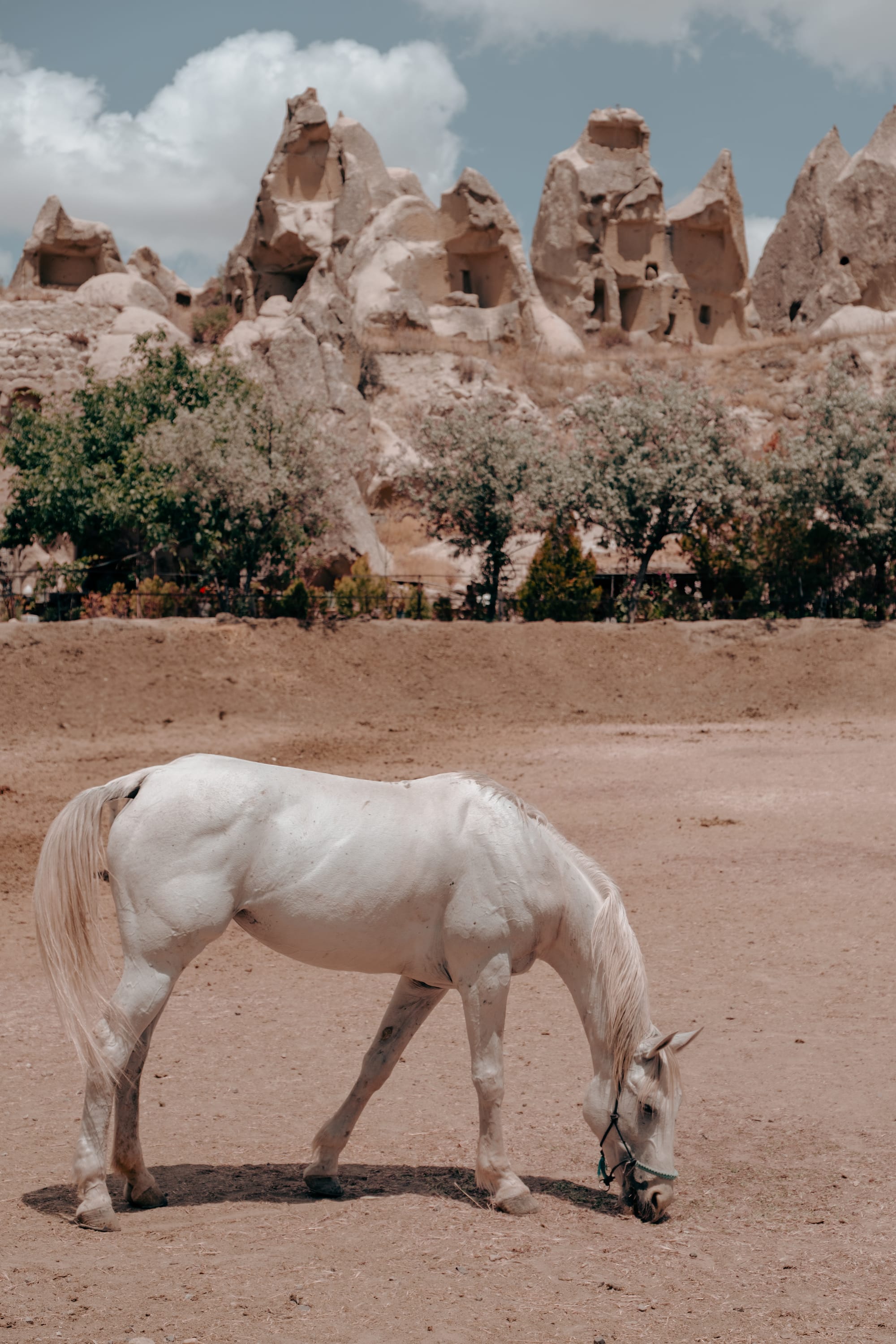
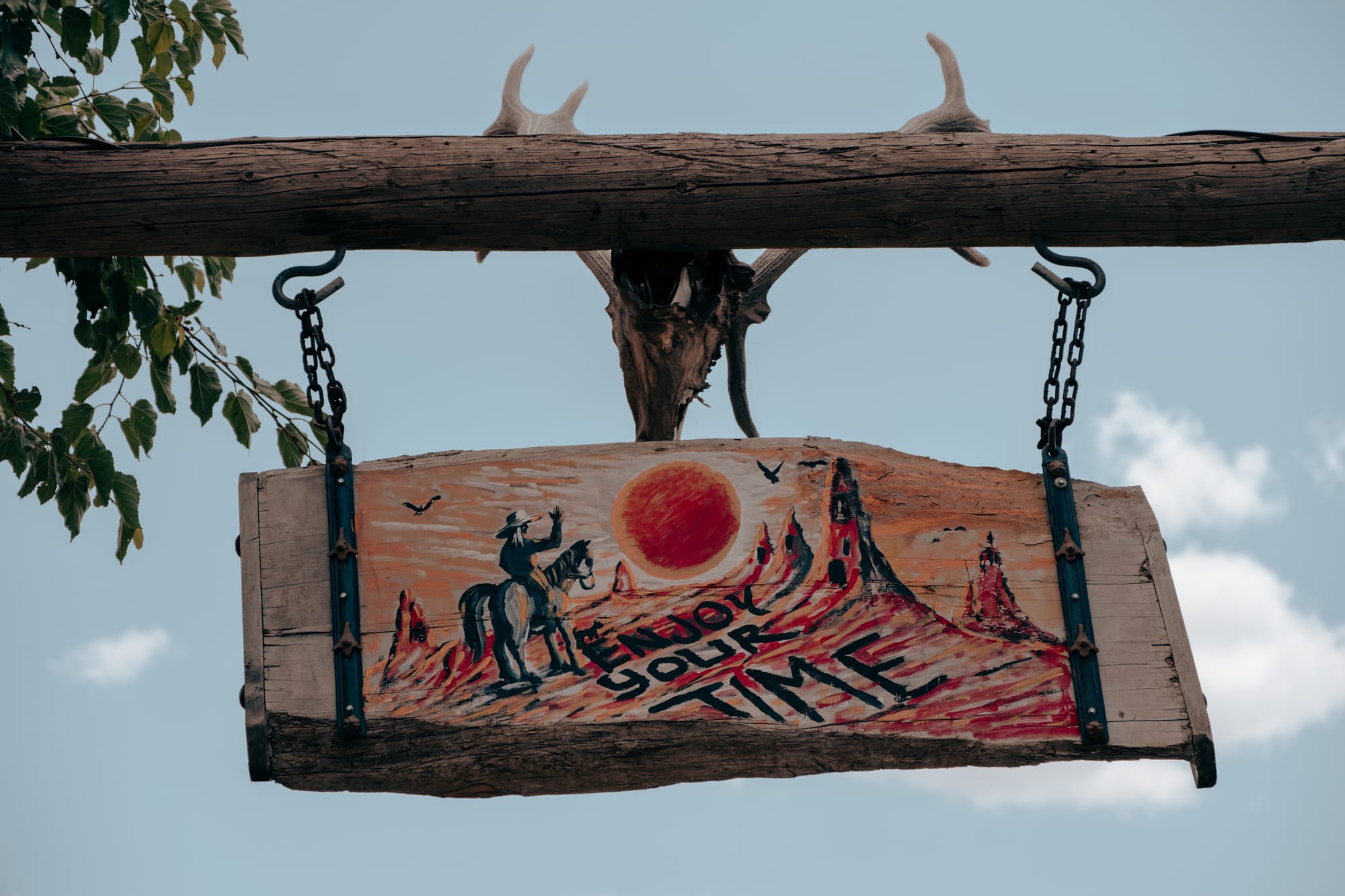
A grazing white horse and a rustic “Enjoy Your Time” sign capture the ranch’s charm
It is enough to wander, to pause in the shadow of a cliff, to feel the slow turning of the place. The ranch holds its shape, unaltered by the day’s passing, and will hold it still tomorrow.






